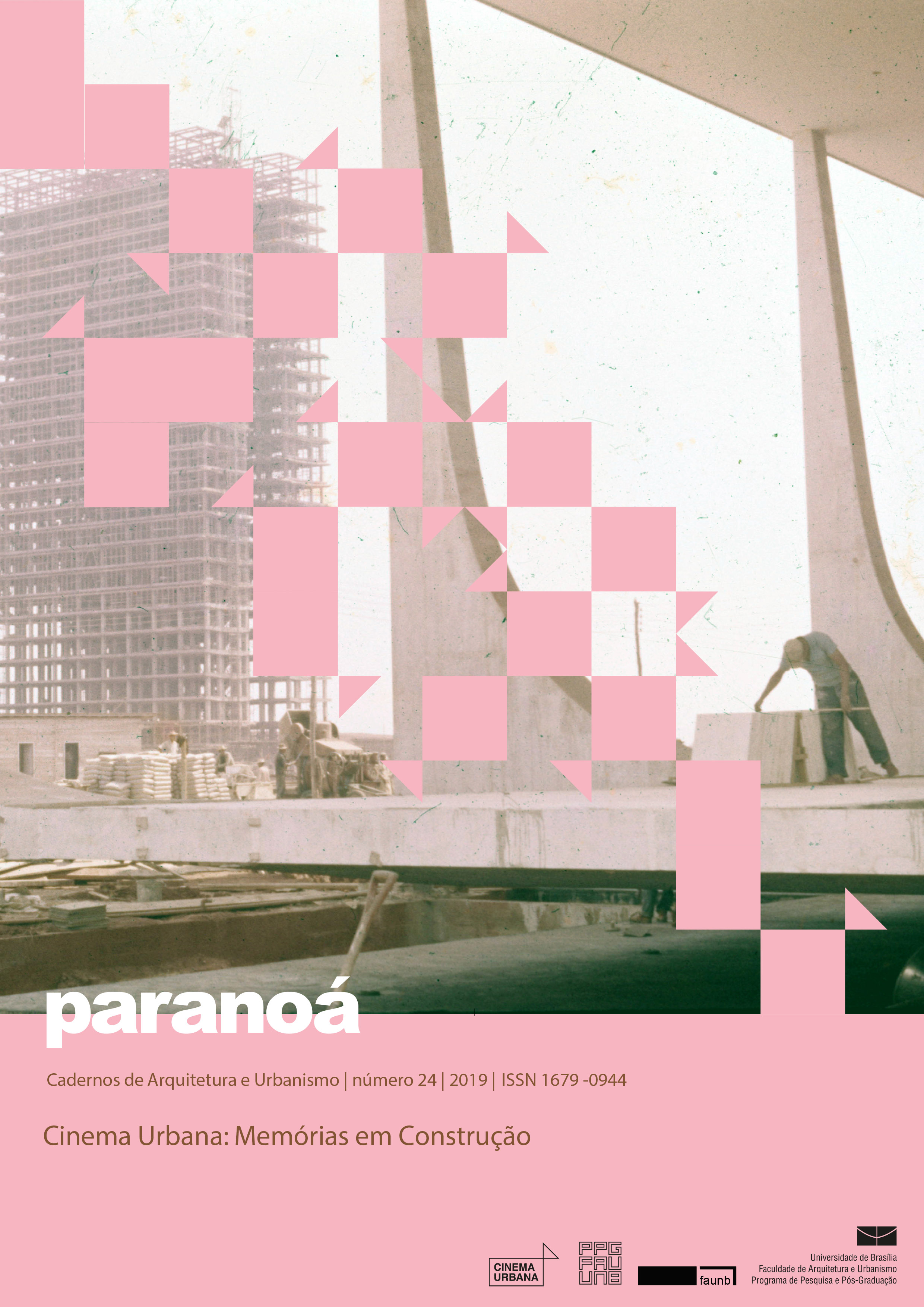Portugues
DOI:
https://doi.org/10.18830/issn.1679-0944.n24.2019.03Keywords:
City and cinema, body e city, representation, apparatusAbstract
The city is an unfinished and culturally produced object. Its spaces are defined historically through the conflicts established by different socio-cultural groups that shape it. The spatial arrangements and their representations refer to the way in which the body relates to the city over time. That said, it is understood that the cinematographic representation of the space is made through the cutout delimited by a frame when the filmmaker aims at the landscape. This picture denounces, between movements and filmed stays, the cartography of the path of the one who operates the camera defining the cinematic image. The camera is understood as a “apparatus” that, due to its characteristics, determine the construction of the frame and, therefore, of the film representation itself. Therefore, in order to understand the cinematographic representation of a space it is necessary to investigate the filmic frame, being aware that it presupposes a relationship between body, space and camera.
Downloads
References
AUMONT, Jacques. A Imagem. Campinas: Papirus, 1993.
_______________. A estética do filme. Campinas: Papirus, 1995.
BARBOSA, Jorge Luiz. A arte de representar como reconhecimento do mundo: o espaço geográfico, o cinema eo imaginário social. GEOgraphia, v. 2, n. 3, p. 69”“88, 2000.
BARTHES, Roland. A câmara clara: nota sobre a fotografia. Rio de Janeiro: Nova Fronteira, 2015.
BAZIN, André. O Cinema - Ensaios. São Paulo: Brasiliense, 1991.
CORRÊA, Roberto Lobato. O espaço urbano. São Paulo: Ática, 1993.
CULLEN, Gordon. Paisagem urbana. São Paulo: Martins Fontes, 1983.
EISENSTEIN, Sergei. A forma do filme. Rio de Janeiro: Jorge Zahar Editor, 1990a.
_________________. O sentido do filme. Rio de Janeiro: Jorge Zahar Editor, 1990b.
FLUSSER, Vilém. Filosofia da caixa preta: ensaios para uma futura filosofia da fotografia. 1a ed. São Paulo: Annablume, 2011.
______________. Comunicologia. Reflexões sobre o futuro. São Paulo: Martins Fontes, 2015.
SANTOS, Milton. A natureza do espaço. Técnica e tempo. Razão e emoção. 4a Edição ed. São Paulo: Editora da Universidade de São Paulo, 2006.
SENNETT, Richard. Carne e pedra: o corpo e a cidade na civilização ocidental. 4. ed. Rio de Janeiro: Best Bolso, 2016.
SHIEL, Mark.; FITZMAURICE, Tony. Screening the city. London / New York: Verso, 2003.
VANOYE, Francis.; GOLIOT-LÉTÉ, Anne. Ensaio sobre a análise fílmica. Campinas: Papirus, 2005.
ZEVI, Bruno. Saber ver arquitetura. 5a Edição ed. São Paulo: Martins Fontes, 1996.
Downloads
Published
How to Cite
Issue
Section
License
Autores que publicam nesta revista concordam com os seguintes termos:
- Autores mantém os direitos autorais e concedem à revista o direito de primeira publicação, com o trabalho simultaneamente licenciado sob a Licença Creative Commons Attribution que permite o compartilhamento do trabalho com reconhecimento da autoria e publicação inicial nesta revista. http://creativecommons.org/licenses/by/4.0
- Autores têm autorização para assumir contratos adicionais separadamente, para distribuição não-exclusiva da versão do trabalho publicada nesta revista (ex.: publicar em repositório institucional ou como capítulo de livro), com reconhecimento de autoria e publicação inicial nesta revista.
- Autores têm permissão e são estimulados a publicar e distribuir seu trabalho online (ex.: em repositórios institucionais ou na sua página pessoal) a qualquer ponto antes ou durante o processo editorial, já que isso pode gerar alterações produtivas, bem como aumentar o impacto e a citação do trabalho publicado (Veja O Efeito do Acesso Livre).















